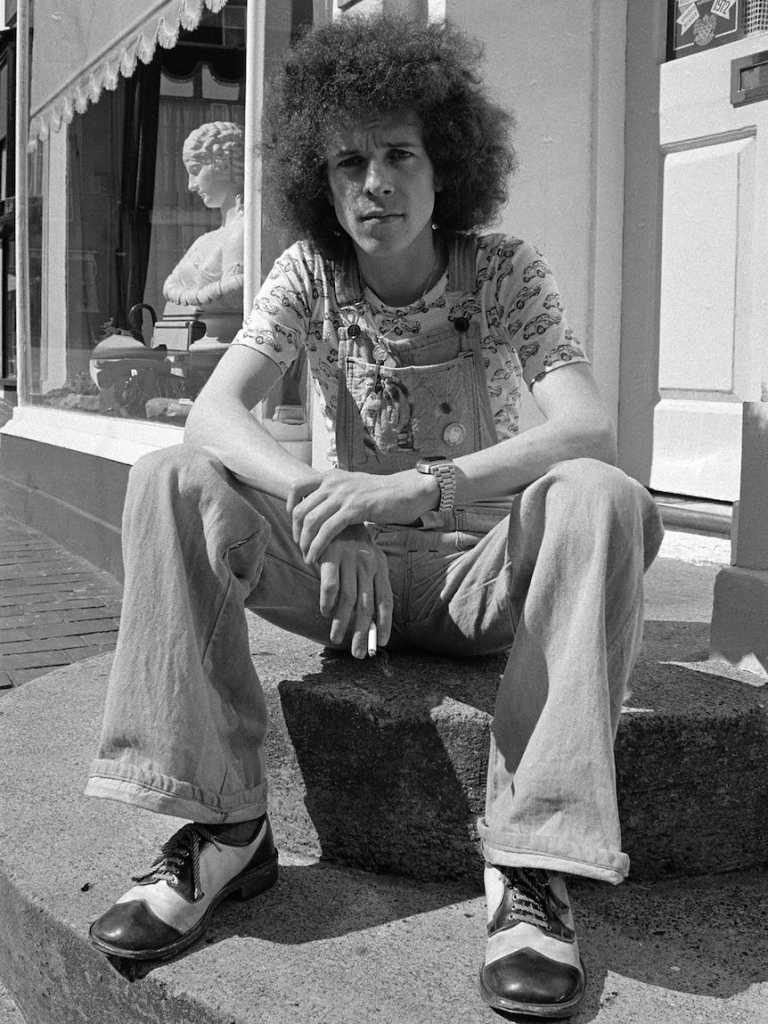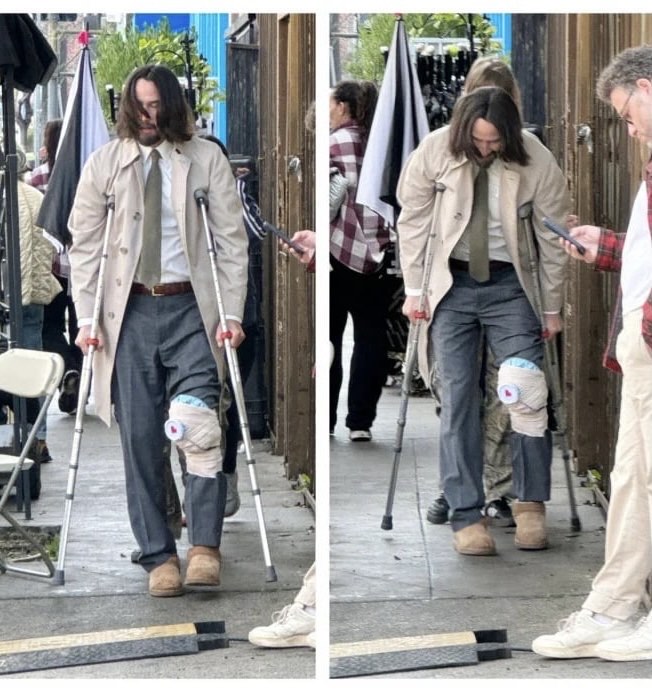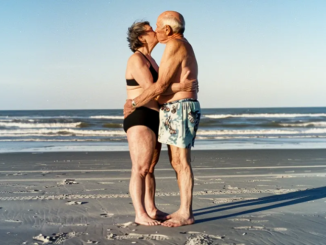“I look at my role as being a friend of Canberra Hospital, I can bring some pleasure and happiness sometimes to people who are really in difficult times in their lives.”
With backing music from a Bluetooth speaker, Sayer croons his way around the cancer wards, making a human connection with everyone he comes across.

Canberra Region Cancer Centre Operations Manager Caroline McIntyre says Sayer’s visits are typically kept a surprise for patients and staff.
“He’s always come in so discreetly,” she says.
“Normally it’s just very quiet, he comes up in the back lift and says hello to literally everybody.
“Some of them are doing it tough, and to have a little bit of joy and light – it really gives them a lift.
“What makes me happy is to see people getting chemo on their feet dancing.”
Jamming with Jimi Hendrix, Countdown and the Troubadour
Originally a graphic designer by trade, English-born Leo Sayer rose to pop prominence in London in the late 1960s, as a singer-songwriter – and was soon adopted by Australia as an honorary son after his first tour here in 1974.
He went on to become an Australian citizen in 2009.
Sayer was a regular on ABC TV’s Countdown during the 70s and 80s, performing chart-toppers like “You Make Me Feel Like Dancing”, “When I Need You”, “More Than I Could Say” and “Orchard Road”.

He blushingly admits they were wild days – when he didn’t always live up to his “good-guy” public persona.
“It was mad, I mean, Top of the Pops in England, Countdown over here,” he says.
“You were mobbed by the fans, I remember being dragged out of a limousine the first tour that I came here, and then speaking to crazy people like Molly Meldrum on TV and trying to sort of like take it all in.”
It seems hard to believe – the petite, well-spoken singer, with a mane of curly hair that inspired changing his name from Gerard to Leo – beating off mobs of screaming fangirls.
Sayer circulated in superstar company, becoming close friends with former Beatles George Harrison and Paul McCartney, collaborating with Roger Daltrey of The Who, and even sharing a sly cigarette or two with John Lennon and Yoko Ono who had a flat above his design studio.
“I met Jimi Hendrix right at the start of his career. I actually jammed with him, playing the harmonica, and him playing the guitar,” he says.
Recalling his 1975 opening night at the famous Troubadour Club in Los Angeles, he looked up to see an intimidating line-up of fans in the front row.

“It was David Bowie, Elton John, and ‘The Fonz’ [Henry Winkler].”
Alongside them: John Cleese, Mick Jagger, Bernie Taupin, and comedian Marty Feldman.
“We never thought it would last, we were adapting to things around us, writing songs about things that are around us,” he says.
“And we thought they were only for our generation — so the amazing thing is my music’s become like a fine wine, where you lay it down and years later, it becomes a collector’s item.
“We’re in an age where the music that I make, young kids are actually latching onto it now, and they’re finding that that generation and that style of music we made is as current now as anything.”
Sayer’s health battles, still spreading hope at 76
Leo Sayer says his hospital charity work caps off a career dedicated to providing joy through music.
“It’s a nice piece of synchronicity really, because I was born in the grounds of a hospital in Shoreham by Sea in Sussex, near Brighton in England,” Mr Sayer said.
“I suppose I’ve always felt comfortable in hospitals and being around hospitals.
“Growing up, my dad was a hospital engineer, Mum was a nurse, my sister was a matron.”

Sayer has health struggles of his own, including three stents in his heart, which help him have a genuine connection to the hospital patients he entertains.
“[My music] is providing something that isn’t taking away from any of the treatment that’s going on. It’s providing something that’s just putting a smile on peoples’ faces.
“Music is communication and that’s what this is all about, we’re communicating, we’re making people feel better.
“We’re not healing people with music, but we are making them feel better about their healing.
“To sell out Canberra Hospital will do me fine.”
Keanu Reeves reveals serious injury he suffered recently while filming latest movie….

Among the most adored stars of his generation is Keanu Reeves. Maybe nobody who has ever met him would say anything negative about him. Thus, many were worried when the well-liked actor disclosed something bad that had happened to him.
To learn more, continue reading.
The 59-year-old actor talked about how he suffered a broken kneecap during production.Renowned for his action-packed career that includes hits like The Matrix and the John Wick series, Reeves disclosed how something relatively harmless killed him.
Colbert inquired of Reeves, “What took place? How did they get to you?

In a lighthearted yet tough man voice, the actor retorted, “No one got to me,” then added, “Accident got to me.”
“Did you jump from one building to another? Were you rolling over sharp objects like razor blades? How did you spend the time? Stephen enquired more.
“No, Stephen, I was entering a room that served as the dressing room. I’ll tell you right away,” Keanu said.

Keanu revealed that it occurred during the filming of a segment with Aziz Ansari and Seth Rogen for the upcoming comedy Good Fortune. Keanu was having fun in the frigid plunge that the three of them were in. He began performing the “cold shuffle” in a room with protected carpeting after they were done. Sadly, while he was doing so, his foot got caught in a pocket.
Keanu got up to stroll in front of Stephen’s desk and illustrate what had happened by demonstrating the weakness in his knee. “I also spiked.” Like, spiked,” he murmured, imitating his own experience. “Just rammed it into the earth.”
“My kneecap, or patella, broke like a chipped potato. But I was unaware of that. However, once my knee burst, Keanu continued.

Keanu joked, “Comedy is hard, man.”
Stephen reiterated, “Aziz and Rogen were not in an action movie.”
No, Keanu said, “It was comedy.”
“Greetings from my life,” Stephen said.

In January of this year, Keanu was seen filming with an ice pack applied to his knee while using crutches.
In addition to starring, Good Fortune marks Aziz Ansari’s directing debut. Alongside Sandra Oh and Keke Palmer, the actor co-wrote and co-produced the film.



Leave a Reply